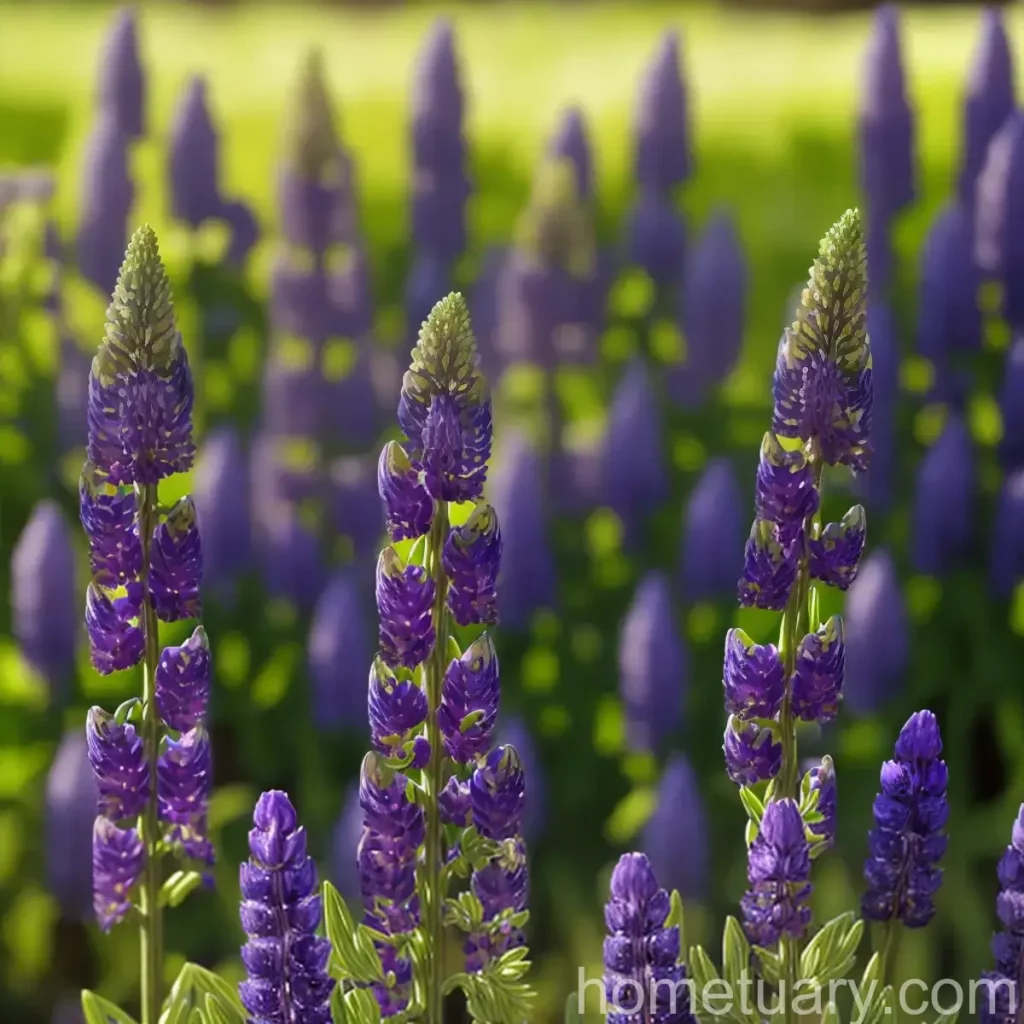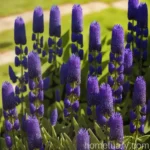Plant Scientist’s Guide: Lupine (Lupinus ‘Manhattan Lights’)
Lupine, scientifically known as Lupinus, is an exquisite genus of flowering plants that belong to the legume family, Fabaceae. The lupine cultivar ‘Manhattan Lights,’ in particular, stands out with its impressive display of bi-colored blooms, making it a popular choice for gardens and landscapes. In this comprehensive guide, we will delve into the various aspects of caring for and cultivating Lupinus ‘Manhattan Lights’, including its culture, uses, water needs, sunlight requirements, fertilizer application, soil preferences, pruning, propagation, common diseases, pests, and much more. Whether you are a seasoned gardener or a novice enthusiast, this guide will equip you with valuable insights to ensure the thriving growth of this stunning perennial plant.
Table of Contents
- Introduction to Lupine (Lupinus ‘Manhattan Lights’)
- Cultural Requirements
- Pruning and Propagation
- Use and Popularity
- Botanist’s Tips
- Fun Facts
- Links to External Resources
Introduction to Lupine (Lupinus ‘Manhattan Lights’)
Lupine, also known as lupin or lupine, is a genus of over 200 species of flowering plants that are widely distributed throughout the Mediterranean region in Europe, Africa, and the Americas. The ‘Manhattan Lights’ cultivar is a spectacular hybrid variety known for its vibrant, bicolored flowers that add a striking visual appeal to any garden or landscape.
Key Takeaways – Lupine (Lupinus ‘Manhattan Lights’)
- Growth Habit: Perennial
- Flower Colors: Bicolor, including shades of blue and white
- Soil Preferences: Well-draining, slightly acidic to neutral
- Sunlight Needs: Full sun to partial shade
- Water Requirements: Moderate, consistently moist but not waterlogged
- Disease Resistance: Generally resilient to diseases
- Pest Control: Resistant to most common pests
- Plant Size: Moderate, typically reaching heights of 18-24 inches
- Landscape Versatility: Suitable for borders, mixed perennial beds, and garden focal points
With these key takeaways in mind, let’s explore the various aspects of caring for and cultivating Lupinus ‘Manhattan Lights’ to optimize its growth and blooming potential.
Cultural Requirements
Successful cultivation of Lupinus ‘Manhattan Lights’ relies on understanding and providing the optimal cultural conditions, including water, sunlight, fertilizer, and soil preferences.
Water
Lupine plants generally thrive in moderately moist soil conditions. However, it is crucial to avoid overwatering, as excessive moisture can lead to root rot and other detrimental conditions. Here are some key considerations regarding water requirements for Lupinus ‘Manhattan Lights’:
- Regular yet Well-Drained Moisture: Provide regular watering to keep the soil consistently moist but not waterlogged.
- Avoid Waterlogging: Ensure proper drainage to prevent waterlogging, especially in heavy or clayey soils.
- Mulching: Apply a layer of organic mulch around the base of the plant to help retain soil moisture and suppress weed growth.
Sunlight
Lupines, including the ‘Manhattan Lights’ cultivar, exhibit a preference for full sun, although they can tolerate partial shade, especially in regions with intense midday sun. Here’s what you need to know about providing the ideal sunlight conditions for Lupinus ‘Manhattan Lights’:
- Full Sun Exposure: Aim to plant Lupine in an area with at least 6-8 hours of direct sunlight each day for optimal blooming and overall growth.
- Partial Shade: In hotter climates, providing some afternoon shade can prevent excessive stress on the plant during peak sunlight hours.
Fertilizer
Proper fertilization can significantly enhance the growth and blooming potential of Lupine plants. When fertilizing Lupinus ‘Manhattan Lights’, consider the following recommendations:
- Balanced Fertilizer: Use a balanced, all-purpose fertilizer with a formulation such as 10-10-10 or 5-5-5 to supply essential nutrients without promoting excessive foliage growth.
- Early Spring Application: Apply fertilizer in early spring when the plants are actively growing, and avoid excessive nitrogen, which can lead to lush foliage at the expense of flowers.
- Avoid Overfertilization: Refrain from overfertilizing, as this can cause nutrient imbalances and potential damage to the plant.
Soil
The soil composition and pH level play a crucial role in the overall health and vigor of Lupinus ‘Manhattan Lights’. Here’s what you need to know about providing the right soil conditions:
- Well-Draining Soil: Lupines prefer well-draining soil to prevent waterlogged conditions that can lead to root rot. Amending heavy soils with organic matter such as compost or peat moss can improve drainage.
- pH Range: Lupines thrive in slightly acidic to neutral soil with a pH range of 6.0-7.0. Conduct a soil test to determine the pH level and make necessary amendments if the soil is too acidic or alkaline.
Pruning and Propagation
Proper pruning and propagation techniques can help maintain the health and vigor of Lupinus ‘Manhattan Lights’ while also allowing for the expansion of your plant collection through propagation.
Pruning
Pruning Lupine plants, including the ‘Manhattan Lights’ variety, primarily focuses on deadheading spent blooms to promote continuous flowering and tidying up the plant’s appearance. Here’s how you can approach pruning this stunning perennial:
- Deadheading: Regularly remove faded or spent flower spikes to encourage the production of new blooms and prolong the flowering period.
- Trimming Foliage: After the blooming period, trim back any discolored or damaged foliage to promote fresh, healthy growth.
Propagation
Propagating Lupinus ‘Manhattan Lights’ can be achieved through various methods, including seed propagation and division. Consider the following propagation tips for expanding your Lupine collection:
- Seed Propagation: Collect mature seeds from the plant and sow them in prepared seed-starting trays or directly in the garden bed in the early spring.
- Division: Every 3-4 years, consider dividing established clumps of Lupinus ‘Manhattan Lights’ to rejuvenate the plant and create new individual specimens.
Use and Popularity
Lupine, especially the ‘Manhattan Lights’ cultivar, boasts widespread popularity among gardeners and landscapers due to its stunning bi-colored blooms and overall ornamental value. Additionally, it is valued for its versatility and resilience in various gardening settings, including container gardening and mixed perennial beds.
Container Gardening
Lupinus ‘Manhattan Lights’ can thrive in containers, adding a vibrant pop of color to patios, balconies, and other outdoor spaces. When cultivating this lupine variety in containers, keep the following considerations in mind:
- Container Size: Use a deep container with sufficient space for root development, as Lupine plants tend to develop extensive root systems.
- Well-Draining Soil: Fill the container with well-draining potting mix, and ensure adequate drainage at the bottom of the container to prevent waterlogging.
- Regular Watering: Containers may dry out more quickly than garden beds, so monitor the soil moisture and provide regular watering to keep the soil consistently moist.
Common Diseases
Lupinus ‘Manhattan Lights’ exhibits good resistance to most common plant diseases. However, it is essential to monitor the plant for any signs of disease and take preventive measures to ensure its continued health and vitality.
- Powdery Mildew: In humid or poorly ventilated conditions, powdery mildew may occur on the foliage. Provide adequate air circulation and avoid overhead watering to prevent this fungal disease.
- Root Rot: Overly wet or waterlogged soil can lead to root rot in lupine plants. Ensure proper drainage and avoid overwatering to prevent this potentially lethal condition.
Common Pests
Lupine plants, including the ‘Manhattan Lights’ variety, are generally resistant to most common garden pests. However, occasional pest issues may arise, and it is essential to address them promptly to prevent significant damage to the plant.
- Aphids: Keep an eye out for aphid infestations, especially on new growth and flower buds. If present, gently spray the affected areas with water or use insecticidal soap to control the aphids.
Botanist’s Tips
Gardening enthusiasts can benefit from the following expert tips to ensure the successful cultivation of Lupinus ‘Manhattan Lights’:
- Enhance Soil Drainage: Incorporate organic matter into the soil to improve drainage and create an optimal growing environment for Lupine plants.
- Monitor Moisture Levels: Regularly check the soil moisture to ensure consistent but not excessive moisture, especially during hot and dry periods.
- Companion Planting: Pair Lupinus ‘Manhattan Lights’ with other sun-loving perennials and annuals to create visually appealing garden compositions.
Fun Facts
Here are some intriguing fun facts about Lupinus ‘Manhattan Lights’ that showcase its unique characteristics and significance in horticulture:
- Pollinator Magnet: The vibrant blooms of ‘Manhattan Lights’ attract an array of pollinators, including bees, butterflies, and hummingbirds, enhancing the ecological value of the garden.
- Native Origins: While the ‘Manhattan Lights’ cultivar is a hybrid variety, it retains the inherent resilience and adaptability of its native lupine counterparts.
Links to External Resources
To further expand your knowledge and insights on cultivating and caring for Lupinus ‘Manhattan Lights’, explore the following external resources:
- Royal Horticultural Society – Lupinus Growing Guide
- University of California Agriculture and Natural Resources – Lupine Pest Notes
In conclusion, mastering the art of cultivating Lupinus ‘Manhattan Lights’ entails providing the optimal cultural conditions, addressing potential pests and diseases, and leveraging propagation techniques to expand your plant collection. By integrating the guidance and recommendations presented in this comprehensive guide, gardeners can embark on a rewarding journey of nurturing these enchanting bi-colored blooms and enhancing the visual allure of their outdoor spaces.















